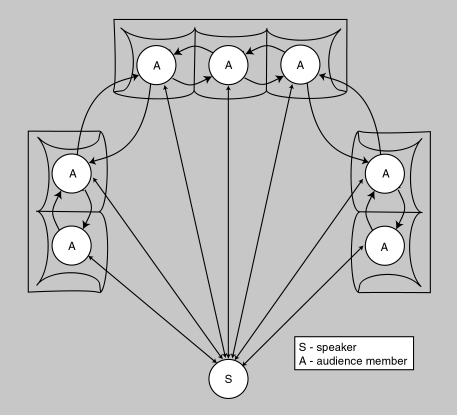-
Developed originally to model the dynamics of
power grids and communication networks.
-
This model allows us to naturally capture the
different ways various factors (especially other people) can
influence or alter the internal state of an individual.
- Computationally tractable
- All topologies are supported by this model
The parts of the model:
- Each node represents an individual as a full-fledged Markov
Process.
- Each arrow represents some form of influence that one individual
has on another.
|

C. Asavathiratham, "The Influence Model: A Tractable Representation
for the Dynamics of Networked Markov Chains," in Dept. of EECS.
Cambridge: MIT, 2000, pp. 188.
|